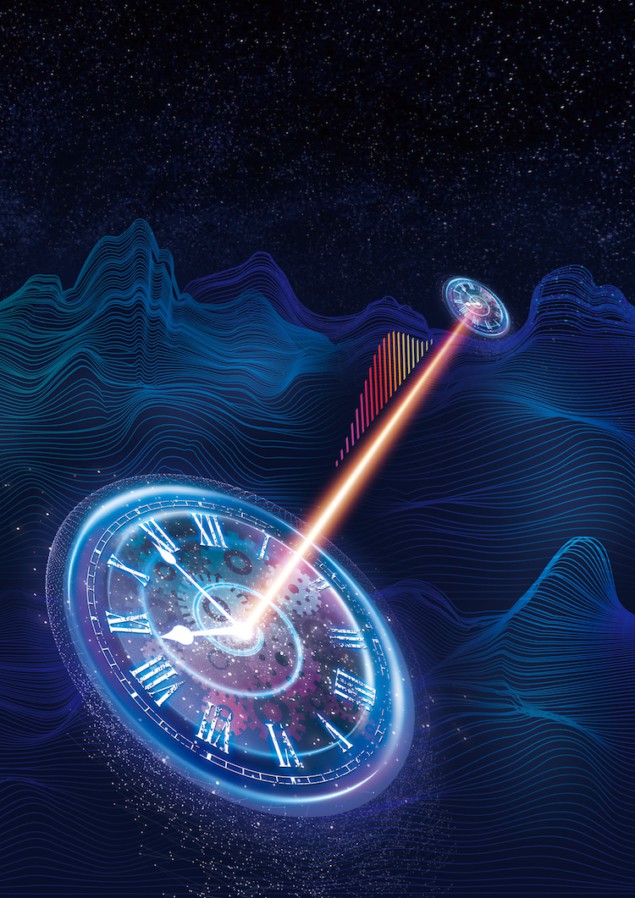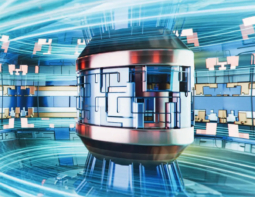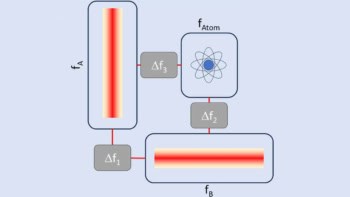
Physicists have transferred time and frequency information over a distance of more than 100 km in free space, far exceeding the previous record. The technique, which makes it possible to synchronize and monitor optical clocks in environments where optical-fibre-based connections are impractical, could be used to set higher standards for metrology, navigation and positioning. It also has applications for basic physics studies such as searching for dark matter, redefining fundamental constants and testing relativity.
An optical clock has three main components. The first is a sample of atoms or ions that transition between energy levels at a well-defined and highly stable reference frequency in the optical region of the electromagnetic spectrum. The second element is a feedback system that “locks” the output of a laser (called the local oscillator) to this reference frequency. The third component provides a very precise measurement of the frequency of the laser, usually via a device known as an optical frequency comb (OFC).
One second in 100 billion years
In the new work, researchers led by Jianwei Pan of the University of Science and Technology of China demonstrated time-frequency dissemination between a feedback system and an OFC separated by a record-breaking distance of 113 km. After 10,000 seconds, the clock’s frequency instability was less than 4 × 10–19, which implies that the clock’s comparison errors would be kept within one second after 100 billion years. The researchers note that this value surpasses the benchmark required to redefine the fundamental unit of the second, which is due to be discussed at the 2026 General Conference on Weights and Measures.
Previous attempts at free-space dissemination of time and frequency at such high precision did not extend beyond dozens of kilometres, which the researchers note is insufficient for high-precision transmission in satellite-to-ground links. “This work opens the path to satellite-ground time-frequency dissemination,” says Pan, “and we anticipate that long-haul free-space OFC links, combined with fibre-based and satellite-based time-frequency links, will become important parts of future optical clock networks.”
Pan adds that the new clock builds on the free-space optical tracking technology developed for the Micius quantum communications satellite, which launched in 2016. “We then developed high power, highly stable OFCs operating at 1 W, high-stability and high-efficiency optical transceiver systems and high-sensitivity linear optical sampling detection operating at nanowatts,” he tells Physics World.

New technique boosts the performance of dual optical frequency combs
The researchers, who report their work in Nature, now plan to develop a Medium Earth Orbit-to-Geosynchronous Equatorial Orbit (MEO-to-GEO) quantum science experiment satellite that can realize both a GEO satellite-based optical frequency standard and satellite-ground time-frequency transfer. “We hope this system will have a time-frequency instability of less than 5 × 10–18 at 10,000 seconds,” Pan says. “Two-way comparison links are being established with the station in China we worked with for this study and the overseas station to realize an intercontinental optical clock comparison. This satellite is planned to launch in 2026.”



